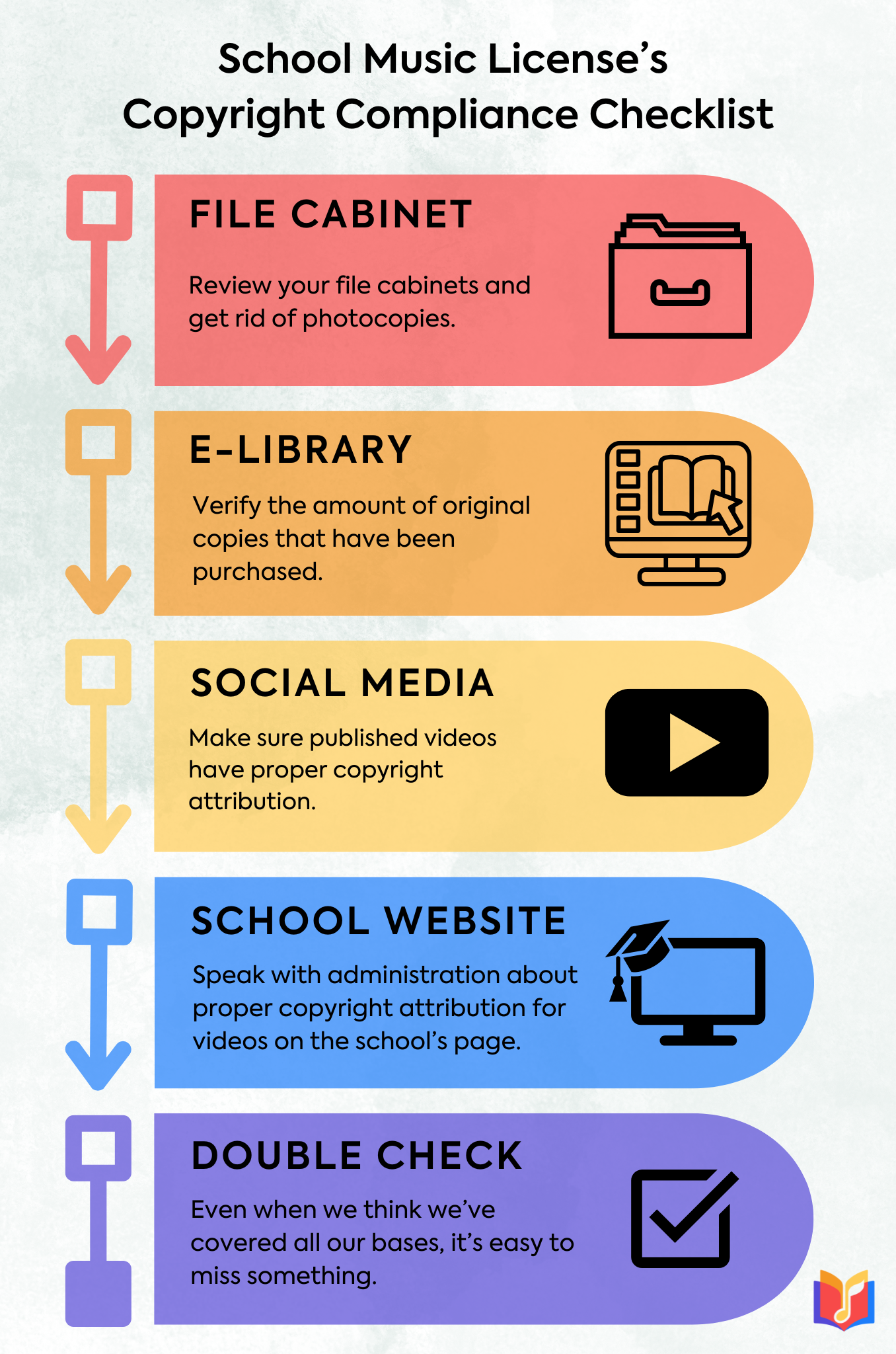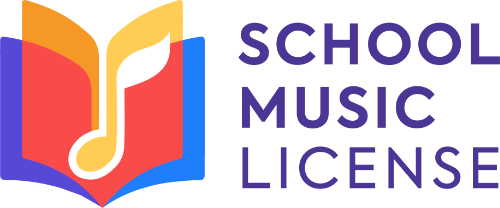Every music educator knows the excitement that comes with stepping into a new position. The potential to shape young musicians, create impactful musical experiences, and leave your mark on a program is what fuels the educator’s journey. That excitement, however, is often coupled with a sense of trepidation. Any music educator could relate to the experience of walking in on your first day to an unexpected discovery. For some, it’s a file cabinet overflowing with copied sheet music and performance videos uploaded to the internet without copyright attribution. In this case, the job quickly becomes more than just teaching.
While assuming best intentions is always the right idea, it’s entirely possible that your predecessor was doing the best they could with the information they had. That’s where the School Music License team can help. The journey towards copyright compliance can be daunting, but there are invaluable lessons to be explored about fostering respect for intellectual property and building a legally sound foundation for a thriving music program.
Initial Copyright Concerns
The first day of reviewing program materials often uncovers glaring copyright issues. A cabinet packed with copied sheet music can be alarming, but it is usually just the tip of the iceberg. Videos and recordings of performances may lack the proper copyright information and be uploaded to a myriad of sites. Teachers may also encounter disparity in understanding and attitudes toward copyright among fellow staff members. Some may see no issue, while others may express confusion, indifference, or outright opposition. The sheer scope of the problem can feel overwhelming, but we’re here to help.
Many directors navigating this complicated process for the first time reach out to colleagues who have faced similar challenges. We recently connected with a couple of educators, Jesse and Charles, and asked them to share their experience and provide valuable perspectives. Jesse recalled her shock upon inheriting a program rife with illegal copyright practices. “It felt like I had to clean up years of neglect,” she said, “I had hundreds of photocopies mixed in with the actual music in my library.” Charles shared a similar sentiment: “You want to focus on making music, but the legal stuff can’t be ignored. It’s so important to tackle copyright issues head on, no matter how uncomfortable it is at first.”
The Road to Compliance
The first step on the road to compliance is an honest assessment of the program’s materials and practices. Jesse’s strategy was to categorize the issues and prioritize the most pressing copyright violations first. For her, that was a litany of performance videos uploaded to various social media platforms. “Addressing these problems requires tough decisions,” Jesse told us. “Sometimes you can get away with muting the unlicensed portion, but most of the time you just have to take down the video entirely and then begin the long process of contacting publishers to secure the proper licensing.”
Once the existing materials have been assessed, many directors face one of the toughest hurdles: budget. Purchasing licensed music and securing the proper permissions to use it requires funds that may not initially be available. Charles advised: “Make a detailed plan and advocate for your budget. Make it crystal clear to your administration that copyright compliance is not optional. It will take work and some time, but with persistence, increased funding can be secured.”
An unexpected obstacle educators may face on this journey is resistance from colleagues. Change is hard, especially for teachers who have been successful with their own methods for a long time. Of his own experiences, Charles said, “Framing is everything. It’s important to focus on what we stand to gain from being copyright compliant and the doors that it opens for us across the board, beyond just the music programs.”
Creating a culture of compliance requires patience, an open mind, and some creativity. A suggestion we received from Jesse was to celebrate the small victories, such as sharing the first fully licensed performance. Making the most out of those wins helps students and staff begin to take ownership of the process and to take pride in being copyright compliant.
Compliance is more than a legal necessity. It’s a way to honor the Artists and Publishers who provide the music we love. For both new and veteran music educators, it is paramount to evaluate programs and take proactive steps to address copyright issues. Doing so not only ensures compliance but helps to foster a culture of respect and integrity that will resonate for years to come.

_________________________________________________________
Photo used with permission from Canva.com
*Special thanks to educator colleagues, Jesse and Charles, for their contributions to this article.

